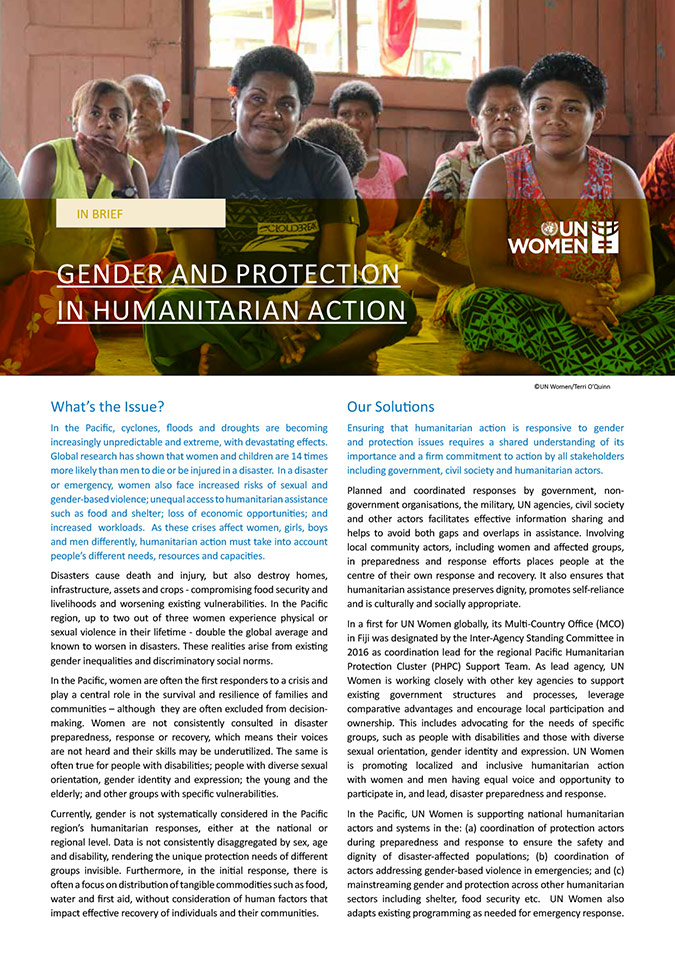
Gender and Protection in Humanitarian Action

In the Pacific, cyclones, floods and droughts are becoming increasingly unpredictable and extreme, with devastating effects. Global research has shown that women and children are 14 times more likely than men to die or be injured in a disaster. In a disaster or emergency, women also face increased risks of sexual and gender-based violence; unequal access to humanitarian assistance such as food and shelter; loss of economic opportunities; and increased workloads. As these crises affect women, girls, boys and men differently, humanitarian action must take into account people’s different needs, resources and capacities.
Disasters cause death and injury, but also destroy homes, infrastructure, assets and crops - compromising food security and livelihoods and worsening existing vulnerabilities. In the Pacific region, up to two out of three women experience physical or sexual violence in their lifetime - double the global average and known to worsen in disasters. These realities arise from existing gender inequalities and discriminatory social norms.In the Pacific, women are often the first responders to a crisis and play a central role in the survival and resilience of families and communities – although they are often excluded from decision-making. Women are not consistently consulted in disaster preparedness, response or recovery, which means their voices are not heard and their skills may be underutilized. The same is often true for people with disabilities; people with diverse sexual orientation, gender identity and expression; the young and the elderly; and other groups with specific vulnerabilities.
Currently, gender is not systematically considered in the Pacific region’s humanitarian responses, either at the national or regional level. Data is not consistently disaggregated by sex, age and disability, rendering the unique protection needs of different groups invisible. Furthermore, in the initial response, there is often a focus on distribution of tangible commodities such as food, water and first aid, without consideration of human factors that impact effective recovery of individuals and their communities.